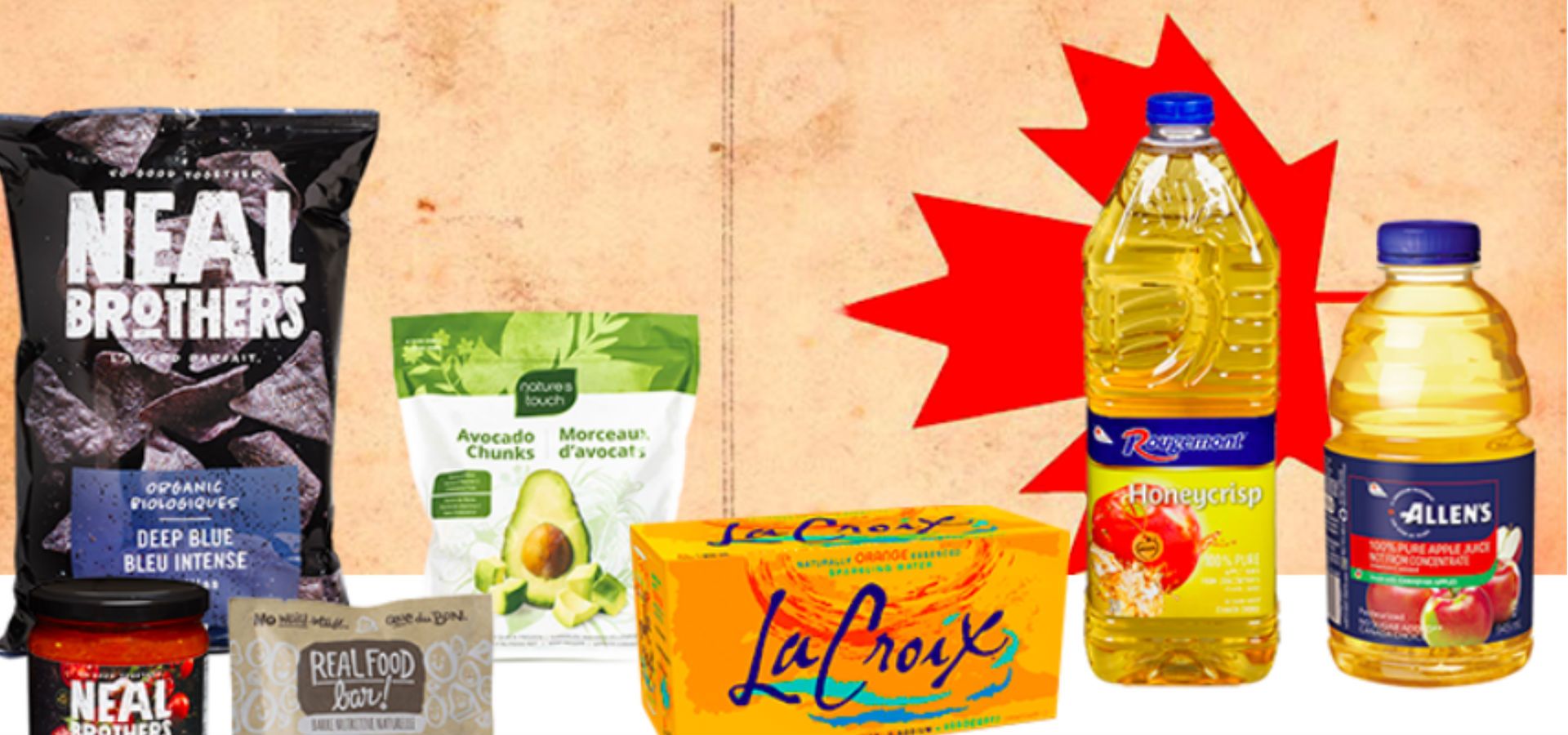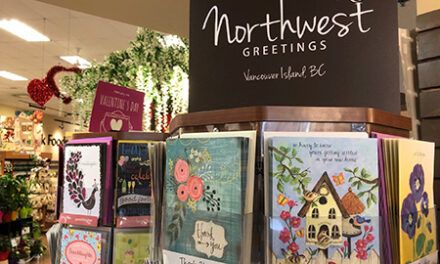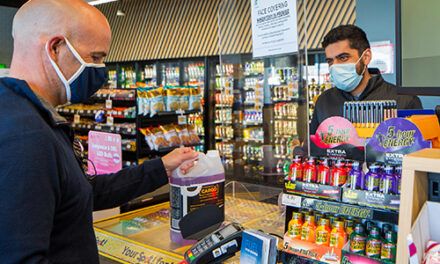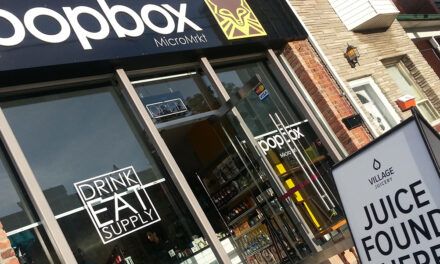
Tariffs and buying Canadian

Tariffs and buying Canadian
“The tensions over NAFTA (USMCA) brought attention to customers and there have been lots of discussions on buying Canadian-made products,” notes Hamed Aghakhani, assistant professor of marketing, Rowe School of Business, Dalhousie University, Halifax, Nova Scotia. “Stocking more Canadian products on shelves may help in boosting Canadian identity and consumers may feel good in the short time.”
However, cautions Aghakhani, it is important to note that, for retailers, shelf space is expensive and, at the end of the day, they also want to see profit from selling their products.
“There are many products that Canada has competitive advantage on, such as maple syrup, potatoes, barley and fish, but there are many other products that we don’t have the top-quality version in the market,” says Aghakhani. “It is in the best interest of the retailer to balance their products. Overall, increasing the number of Canadian made products is good, but adding a product to a shelf means removing another product. My suggestion to retailers is to promote those Canadian-made products that they already have in store, instead of just increasing the number of products.”
Retailers should focus on products that have the potential for competitive advantage, says Aghakhani.
“We should absolutely encourage people to purchase products that are made in Canada but that doesn’t mean we have to reinvent the wheel,” he states. “To have a successful Canadian product, we eventually have to compete with other products and other manufacturers. Each country has limited resources, so it is important to assign our resources to those areas that bring the highest yield.”
Neal Brothers Foods is just one example of a Canadian company that has felt the impact of the Canadian-U.S. tariff battle.
“Tariffs have affected one of our biggest lines – La Croix Water,” states Peter Neal, co-founder, Neal Brothers Foods. “It’s a massive brand and it has been hit with a 10 per cent tariff and, in the food industry there isn’t a ton of margin to begin with, so to be hit with a 10 per cent tariff and not have all of our retailer partners respond and accept a price increase is crushing. It’s hurtful.”
Neal says he is hoping that Canada and the United States will soon settle the tariff situation.
“I am really hoping that now that we have come to a decent agreement, as far as we can tell, in reworking NAFTA (USMCA) that the tariffs will be reversed soon,” states Neal. “I am hoping we can walk away from these penalties. They’re hurting a lot of manufacturers across Canada and they’re hurting a lot of U.S. manufacturers as well. So, let’s get on with it. Let’s get along again. I can’t understand why, when we’ve come to an overall agreement, these tariffs are still in place.”
Now is as good a time as ever to promote Canadian products, says Neal.
“If you have an item that has many good merits from packaging to taste in all the boxes that need to be ticked for whatever category that product is in, and it is a Canadian item, then we should be doing what we can as a community, as a country to support each other,” says Neal. “And, it can’t just be done on sheer numbers because if you are to look at traditional, historical sales from U.S. products, chances are they’re going to beat you almost any day. But, I think it is smart to look at the advantages that come with Canadian products, such as proximity, freshness to market and currency. You are going to mitigate currency swings assuming the ingredients, etc. for the Canadian product aren’t overly influenced by U.S. currency.”
Neal spends time with small start-up Canadian companies as a mentor to help them get on their feet and feels that retailers should keep an open mind when it comes to dealing with a smaller Canadian brand.
“I meet with aspiring food entrepreneurs or new start-ups from zero to five years, on a regular basis,” says Neal. “Often times, they are not as savvy as companies who have a broker involved or have been through the process on a larger scale longer. Their challenges in ensuring that all the boxes are checked to get their products from manufacturer to the store shelf are real and I think retailers could help out almost in a mentoring position and try to make the transition smoother for them. I think retailers would be smart to say, let’s give them a little bit extra time and they’ll give our store a point of differentiation.
There’s a good likelihood that we can help each other and have a win-win opportunity where we are helping and supporting each other and giving the consumer something a little bit different.”
Consumers are looking for many factors when they make purchasing decisions, notes Aghakhani.
“Quality, price, delivery, convenience and country of origin (COO) are among these factors,” he says. “COO is one factor and it is usually a positive factor when a product comes from a country where that product is well known, such as wine from France, caviar from Iran or chocolate from Belgium. It is very difficult to increase the value of some of these variables in short term. Due to recent news, Canadian consumers may value more on COO for products that are coming from Canada, but in the long term, they will again go back to their regular model of decision making.”
Seeking to purchase Canadian products may not be as easy as it sounds.
“Looking for Canadian products doesn’t mean that Canadians have to purchase Blackberry over Samsung or Apple,” says Aghakhani. “Even if they decide to go with Blackberry, can we say that the Blackberry cell phone is completely Canadian? It is probably designed in Canada with the help of engineers from all over the world and most probably manufactured in China. So, it’s not 100 per cent Canadian.”
At the end of the day, price will be one of the top factors as to why consumers choose product A over product B, says Aghakhani.
“The world economy is interconnected, which means it is more difficult to find a product that is manufactured from A to Z in one country,” he explains. “We talk about Heinz ketchup, for example. They may use Canadian tomatoes but in the end the company is American. We use Canadian LEDs, but the technology is Canadian while the LEDs are made in China. We drive cars that are manufactured in Canada, but the technology comes from South Korea or Japan. The supply chain system in the market nowadays is more complicated and it is very difficult to find 100 per cent Canadian products.”
Social media and viral marketing have definitely contributed to a buy Canadian movement but Aghakhani notes that this market is cluttered with many messages each and every day.
“Many topics in social media depend on what happens around us in news, weather, etc.” comments Aghakhani. “Having an outstanding message that lasts a long time is very difficult. As soon as the news shifts to another item, the focus of consumer social media users also shifts.”
Interest in buying Canadian will not fade, however it will be more rationalized over time, says Aghakhani, while Neal also agrees that the average consumer with give little credence to country of origin when they are making a quick decision at their local convenience store.
“I think that despite all of the ugly noise across the border, it is somewhat fleeting,” remarks Neal. “I think a lot of Canadians and other people around the world see the United States in a negative light solely on current leadership and when that changes, I think our love and respect as a neighbour will be restored to some degree. Maybe it will be a little less but I don’t think it’s at a point where it’s going to affect people’s decisions whether to purchase a certain product or not, especially if it is coming from a company that resonates with them.”
Canadian brands need to do a better job of understanding such things as paying for good photography and packaging and reaching out to advisors and mentors, as well as enhancing their social media presence, says Neal.
“Doing all of the things that Americans do so well,” he remarks, “tooting their own horn and being driven for success and understanding what is takes to get it. I think that needs to happen as much or more than anything else.”
Picking up a product and supporting it just because it’s Canadian when the entrepreneur behind it isn’t going to put in the same robust effort to ensure that product moves off the shelf is a nobody wins scenario, says Neal.
“If you have made the decision as a retailer to engage with a manufacturer and put their brand on your shelf because you think it’s got all the right merits, then by all means call it out,” he adds. “You don’t necessarily need to put up a big Canadian flag but do call attention to it being a locally sourced product. To say that you support local products resonates with people.”
Canada is a diverse country with people from many parts of the world so stores have sections that are dedicated to international products, notes Aghakhani.
“At the same time, stores must promote products that are Canadian,” he states. “This will help many small businesses in Canada. People in Vancouver may know that Hope Blooms is a fresh herb dressing coming from Halifax and may think it is another dressing sauce owned by a big corporation. However, if they see a store promoting it as a Canadian brand, consumers will be more interested to purchase it and eventually will learn that this small community company helps children in Halifax.”
Consumers will buy a Canadian product when they see the product has good quality and satisfies their needs, he says.
“In the short term, this is a great opportunity for Canadian companies to focus on their Canadian identity and promote to consumers and make sure consumers understand that they are Canadian,” notes Aghakhani.
Neal Brothers Foods is one example of a company with a strong Canadian history. Based out of Richmond Hill, Ontario, brothers Chris and Peter started the business in their mother’s kitchen in 1988.
There are plenty of other examples of strong Canadian-based companies. Kruger Products is a leading tissue manufacturer of such brands as Cashmere bathroom tissue, Sponge Towels, Scotties and Purex. Headquartered in Mississauga, Ontario, Kruger Products employs more than 2,000 Canadians and operates manufacturing plants in British Columbia, Ontario and Quebec.
“It surprises us that Canadian consumers are unaware our brands are proudly made in Canada as it’s displayed on all our brand websites and packaging,” says Nancy Marcus, chief marketing officer, Kruger Products. “We are a third-generation Canadian family business with more than a 100-year history in this country. We are proud that our leading brands are made in Canada. Given the current political and economic climate, it only makes sense to support Canadian businesses committed to investing in our next generation by creating jobs and bettering the lives of Canadians through social good initiatives.”
Lassonde is a company that was founded by Aristide Lassonde in 1918 and operated mainly as a vegetable canning facility until 1959 when Willie Lassonde, father of Pierre-Paul Lassonde who is the current chairman of the board of directors of Lassonde Industries Inc., decided to diversify by adding the production of apple juice to the vegetable operations.
Canadian John Tentomas founded Nature’s Touch in his basement in 2004 and packed his first order by hand in a small rented room in a warehouse. He eventually grew the business to a 75 per cent market share in Canada in consumer retail frozen fruit.
The country is full of enterprising Canadians like Neal, Lassonde and Tentomas, many of whom are just starting out on their entrepreneurial journey. The silver lining in a time of turmoil regarding tariffs and trade negotiations might be that these Canadian companies might be able to garner more attention and some assistance in getting their product on the shelves of retailers across the country.


































